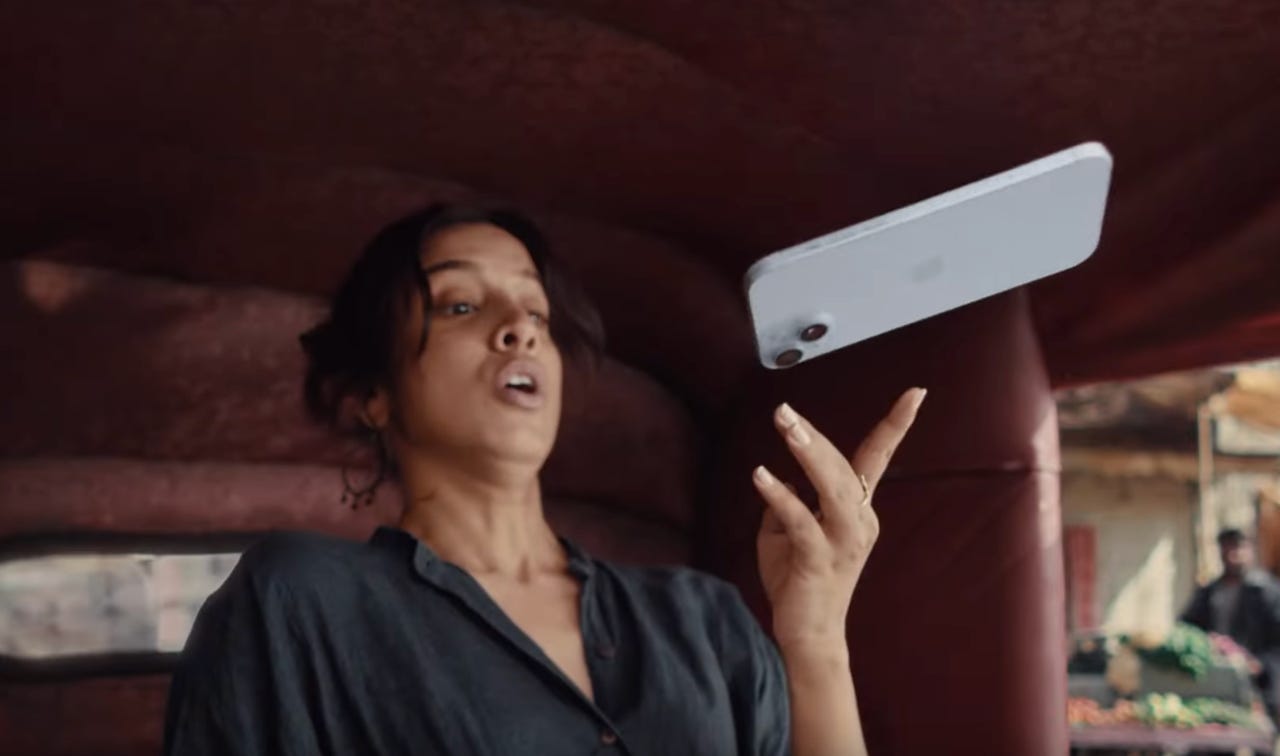
Screenshot by Chris Matyszczyk/ZDNET
It’s rarely effective when someone tells you to ‘relax.’
It suggests you can just turn on your relax-o-meter and chill.
Yet Apple has been doing this for quite some time and I’m not sure how well it’s working.
Also: The best iPhone 15 cases you can buy right now
You see, it’s been running its “Relax, it’s an iPhone” campaign for three years, yet its customers don’t seem to be listening.
The campaign features someone in a difficult situation dropping their iPhone, yet the device remains miraculously intact. Indeed, the latest installment came out this week and it’s a wonderful thing. Artistically, that is.
Here we have a woman in a rickshaw on a very busy Indian street. She’s intent on watching a cricket match on her iPhone.
The rickshaw driver, however, appears to have NASCAR ambitions. He takes turns as if the police are chasing him. He hits bumps as if they simply aren’t there.
Naturally, this affects his passenger’s viewing pleasure.
Her iPhone slips from her hands and bounces all over the rickshaw. It even hits the floor.
Naturally, there is no damage. It’s “dependably durable,” says Apple.
As in all the films in this series, the phone isn’t enclosed in a case. It’s as if Apple keeps insisting that you really, really don’t need one, even as it presents cases on its website and in its stores.
Also: Which iPhone 15 model should you buy? Comparing regular, Plus, Pro, and Pro Max
It’s a peculiar rarity for Apple to advertise a product in a way that’s entirely counter to how its customers use it.
My non-scientific analysis is that 99.9% of people use a case. A slightly more scientific examination shows that the phone case market is worth more than $20 billion a year.
If people truly believed their phones were dependably durable, why would they buy a case?
When it comes to iPhone cases, ZDNET has an excellent analysis of the best iPhone cases you can buy. There are now so many designs that many people prefer to use them not just to protect but to express some sort of individualism.
Also: Three iPhone 16 features that would win me over from Android
A confession: I don’t use a case. I’ll never use a case — unless it’s part of a brief, Taylor Swift-inspired experiment. I’ve never had cause to replace any of my iPhone 12’s parts. (Touches wood.)
Yet I concede that in the real world, people don’t trust themselves and they don’t quite believe phones are so sturdy that nothing can ever smash or break them.
Perhaps, then, there’s a small marketing lesson here. If you’re going to keep insisting that you sell an extremely well-made product, reflect on the way your customers actually use the product. Find a way to incorporate the case into the sell.
Apple could show someone unable to decide which case to put on their phone, torturing themselves over the choice and then, in a heap of frustration, tossing their iPhone to the floor. Yet still the iPhone survives.
Also: I’ve tested hundreds of phone cases. Here’s why the Everyday Case is my favorite
Publicly appearing to deny the existence of cases, creating a make-believe world in which everyone has a caseless iPhone, seems oddly unreal.
And one can rarely accuse Apple of being unreal, right?